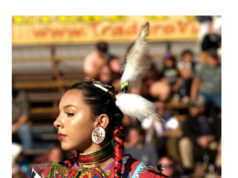The death of internationally renowned art expert Ted Pillsbury is, somewhat surprisingly, the loss of an influential voice for early Texas art.
Texas art collectors have no shame in touting their state’s early painters and sculptors. The works of Texas artists, particularly those in the Fort Worth Circle of the 1940s and 1950s, can stand side by side with most any other genre or era (yes, I know, that last sentence was spoken like the biased Fort Worth native that I am).
But Pillsbury wasn’t from these parts. He was from up North. Graduated from Yale. Received a doctorate in Italian Renaissance art from the Courtauld Institute of Art in London, for chrissakes.
He was a bigshot.
New York Times art critic John Russell called Pillsbury “one of the most gifted men in the American museum profession.”
He dealt in works by the greatest international artists of all time.
Yet he was unabashedly thrilled with early Texas art. He owned several paintings by Frank Reaugh, and was enthusiastic about many regional artists, including those in the Fort Worth Circle.

Author and Panhandle-Plains Historical Museum curator Michael Grauer lunched with Pillsbury a few weeks ago, and Pillsbury brought along several small Reaugh paintings he’d recently acquired to show them off.
“In the last few years he began to see that early Texas art fits much more strongly in the great sphere and universe of world art,” Grauer said. “He was especially taken with Mr. Reagh’s cloud studies, and he loved his field sketches. Not a lot of collectors will respond to a field sketch like Ted did. Ted liked the freshness.”
European scholars are skeptical of most American schools of art. Pillsbury was trained in that snobby atmosphere, but he saw early Texas art as legitimate.
“Given his international reputation, it was almost like a stamp of approval,” Grauer said. “He could have been a stuffed shirt but he wasn’t. He was a genuine guy. To have someone like that in your corner, you can’t get any better than that.”
Grauer isn’t surprised that Pillsbury would embrace a school of art outside the typical sphere.
“The true connoisseur looks at the art regardless of whose signature is on it,” he said. “Ted saw that, whether it was a landscape and cattle painter from Dallas or an early Italian Renaissance painter from Bologna. Most scholars of his acclaim and standing aren’t willing to do that, they play it safe. Ted Pillsbury didn’t play it safe.”
Grauer, like most of Pillsbury’s friends, are having trouble accepting that the gifted art scholar killed himself.
“He was the last person I thought would do that,” Grauer said.












One night at a David Dike auction I was bidding on a small piece by early Fort Worth Circle artist George Grammer and thought I might be able to “steal” it. But the price kept going up until it left my comfort zone so I dropped out. To my great surprise I looked around to see who was bidding it up and there stood Ted Pillsbury grinning from ear to ear. After the auction was over he was going around bragging about the beautiful little Grammer he had bought. I asked him for whom was he buying that night and he quickly responded, for me. And the Grammer? It is for my personal collection.